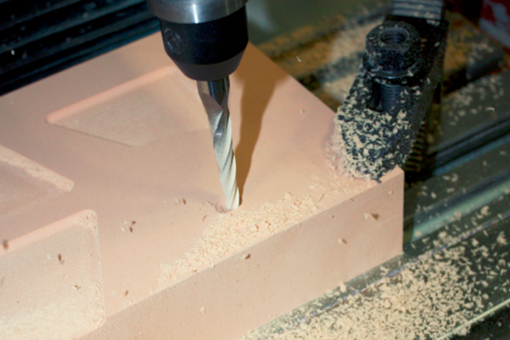DUNA introduces Corafoam tooling board product line
The 2-Ib polyurethane Corafoam HPT-35 makes for efficient production of prototypes, is non-toxic and can be applied to composite layup tooling.

Source | DUNA-USA
DUNA-USA (Baytown, Texas, U.S.) introduces the addition of its new polyurethane Corafoam tooling board product line, Corafoam HPT-35 2lb/ft³. It is available in blocks up to 29.5" x 48" x 96" and is said to be a dust-free formulation.
According to DUNA, HPT-35 is a good alternative to EPS/Polystyrene for large tools, props or as a base for tooling paste. Because it is compatible with almost any type of coating, the company says tooling paste can be applied directly to it, eliminating days of extra labor required for sealing EPS prior to tooling paste application. Further, Corafoam HPT-35 is non-toxic, and can be fabricated with anything that can cut wood.
The company also contends that its Coraform polyurethane tooling board makes for efficient production of prototypes, as the product can be machine far faster than hard or metallic tooling options. Moreover, it is said to be much easier to accommodate late-stage design changes by simply bonding in a new piece of tooling board. Tooling board applications can include composite layup tooling, pattern making, check fixtures, tool proofing, visual display prototypes and more.
With the completion of DUNA’s plant expansion and installation of two additional product lines, the company has also increased the maximum sheet size available for 10-lb, 15-lb and 20-lb/ft³ Corafoam. Corafoam 10Ib is offered up to 18" x 48" x 96", Corafoam 15lb up to 12" x 48" x 96" or 9" x 60" x 120" and Corafoam 20Ib up to 12" x 48" x 96" or 8" x 60" x 120". Overall, DUNA says the increased sheet size reduces bonding and labor time and eliminate bond lines with larger sheets and blocks.
Related Content
-
The lessons behind OceanGate
Carbon fiber composites faced much criticism in the wake of the OceanGate submersible accident. CW’s publisher Jeff Sloan explains that it’s not that simple.
-
Manufacturing the MFFD thermoplastic composite fuselage
Demonstrator’s upper, lower shells and assembly prove materials and new processes for lighter, cheaper and more sustainable high-rate future aircraft.
-
PEEK vs. PEKK vs. PAEK and continuous compression molding
Suppliers of thermoplastics and carbon fiber chime in regarding PEEK vs. PEKK, and now PAEK, as well as in-situ consolidation — the supply chain for thermoplastic tape composites continues to evolve.
















